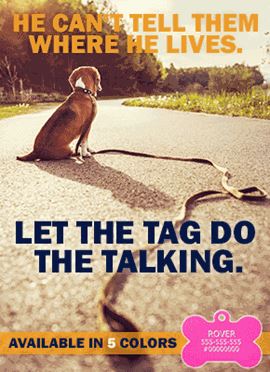
Ask the Trainer: Teach Your Dog to High-Five
It doesn’t matter if you’re dealing with a scrappy little pup who’s learning for the first time or an older dog ready to try something new, Everydog’s resident expert for all things canine, Crystal Demars, has sound advice for owners looking to teach their dogs some new tricks. Recently, we asked Crystal about all the ins and outs of the high-five command—a feat that’s both easy to learn and a great way of showing off your dog’s skills.
What’s the benefit of teaching a dog how to give a high-five?
This is a great trick if you have an energetic dog who likes to jump and move around, since it teaches the dog how to behave and casts him in a more lovable and approachable light. People like the high-five command because it's funny and interactive, and dogs like it because it gets them what they want: attention, affection, and treats!
In addition to treats, what else will help dog owners teach this trick to their pets?
It’s extremely helpful if the dog knows the sit command first. If he doesn’t, it will be difficult to maintain balance working from the standing position. Other than that, it's a simple trick that requires only a little motivation. Also, remember that dogs who have recently eaten are less interested in food, so food motivators will be less effective. You will likely get a better result if you start this trick with a dog who has not eaten for at least two hours.
Please explain how to teach a dog to high-five.
Before beginning, find a treat that your dog loves, then break that treat down into small pieces about half the size of your pinky nail. Forty to fifty small pieces should be enough for one training session.
Step 1) Acquiring the Behavior

Put a few treats in your hand, and let your dog see and smell the treats. You can give him a few pieces to increase his interest. Once you have his attention, close the treats in your hand and lower your hand near his front paw. Having your hand next to his paw may entice him to lightly swat at it, which is something you can work with. Use the same paw each time to avoid confusion.
With your dog in a sit and your hand by your dog's paw, wait to see if the dog paws at your hand. If so, immediately reward your dog by saying "Good job!" and giving him a couple of treats. Repeat this over and over, each time he paws at your hand. Continue this step until the dog is consistently pawing your hand eight out of ten times.
However, if your dog doesn't immediately start pawing at your hand early on, you can give his toes a gentle bump or tap until he lifts his paw. Repeat this until he's lifting his paw on his own. Then, begin placing your hand under his paw, treating and repeating until he's putting his paw in your hand by himself.
Once your dog is pawing at your hand on the ground consistently (again, eight out of ten times), flatten your hand—still low to the ground—with the palm side up. You can conceal the treat between your fingers. Just like before, wait for the dog to swat your hand. When he does, treat and repeat. After consistency is reached, you can begin steadily moving your hand slightly higher on additional attempts.
At this point, you can also keep the treat in a different location, such as your pocket or the other hand. You should still be giving him a reward each time he does the trick correctly, but keeping it in your palm is no longer necessary.
Step 2) Naming the Trick

Once your dog has the previous step down, you can begin teaching him the name of the trick. From this point on, say, "High-five!" before offering your palm, then reward him upon doing so. Treat, then repeat. Again, make sure to gain consistency before moving to the next step. Over time, he will learn to associate the trick with its proper name.
Step 3) Polishing and Patience

Many people mistakenly believe that once a dog associates the name of the trick with the behavior that the trick has been learned. This is a classic mistake and the main reason why, when you go to show off your new trick to your friends, your dog will look as if he's never heard of it in his life. Ultimately, a behavior, or trick, is only considered learned when the dog can offer the behavior on a consistent basis in eight out of ten different training sessions and eight out of ten different areas—including indoors, outdoors, familiar places, unfamiliar places, and distracting locations.
Most dogs aren't great at generalizing new behaviors. They tend to think that "high-five" translates to "lift paw to human's palm in living room with television off while human is wearing fuzzy slippers," since those were the variables present when you first taught him the trick.
Whenever there’s a new variable added to the command (a different room, the outdoors, having a guest over, sneakers as opposed to fuzzy slippers), it becomes a different trick altogether, and you will have to retrain it, so to speak. Try going backwards a few steps until the dog remembers, which will generalize the behavior to different settings.
Also, don't be surprised if at some point it appears your dog has forgotten the trick altogether. Just start over, and he will begin to remember, and at each new session, he will become more fluent in the trick and won’t have to do as much backtracking. Eventually, the dog will come to the realization that “high-five” means “Lift my paw to your palm anywhere, anytime—not just in the living room with the television off, while you're wearing your fuzzy slippers.








